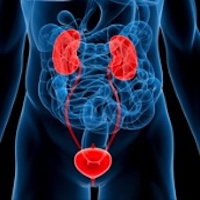Role of total motile sperm count in the evaluation of young men with bilateral subclinical varicocele and asthenospermia

Accepted: August 24, 2020
All claims expressed in this article are solely those of the authors and do not necessarily represent those of their affiliated organizations, or those of the publisher, the editors and the reviewers. Any product that may be evaluated in this article or claim that may be made by its manufacturer is not guaranteed or endorsed by the publisher.
Authors
Introduction: In comparison to its clinical analogue, the subclinical varicocele represents a questionable entity and specific guidelines for the optimal management are lacking. In our previous study of patients with subclinical varicocele, we showed that bilateral condition is associated with risk of dyspermia. In the present study, we evaluated the risk of deterioration of semen quality in men with bilateral disease and impaired motility according to WHO criteria. Materials and methods: Men with bilateral subclinical varicocele, not desiring fatherhood at the time of presentation, were included in study. During initial evaluation, the number of Total Motile Sperm Count (TMSC) was calculated and the patients’ age, total testicular volume (TTV), maximum venous size and mean resistive index (RI) of the intratesticular arteries were recorded. We classified the participants in five classes according to the TMSC reading: class A-: TMSC < 5 x 106, class A: TMSC between 5-10 x 106, class B: TMSC between 10-15 x 106, class C: TMSC between 15-20 x 106, and class D: TMSC > 20 x 106 per ejaculate. The participants were seen after 6 months for a repeat spermiogram and physical examination. If clinical varicocele was diagnosed or a new abnormality in the spermiogram was noted, the participants were excluded from the study. The remaining patients were allocated to two groups according to the repeat TMSC reading: patients sub-classified into a lower class (group 1), and patients remaining at the same class (group 2). A comparative analysis was performed between two groups. Results: Nineteen men were included. Nine patients were subclassified (group 1). Three patients moved to A- class (< 5 x 106). Ten patients remained in the same class having no deterioration (group 2). Comparing the two groups, no statistically significant difference was recognized for age, TTV, maximum venous size on both sides, and mean RI (p > 0.05). However, the initial reading for TMSC was 14.57 x 106 in group 1, and 22.84 x 106 in group 2, respectively. This difference was statistically significant (p < 0.05). Additionally, in a paired analysis there was a significant difference in TMSC after 6 months (p < 0.05), too. Summary Conclusions: Young men with bilateral varicocele and asthenospermia seem to be at risk of deterioration in their semen quality after a follow-up of 6 months. The measurement of TMSC can unmask patients at risk, whereas men with the lowest readings seem to be at highest risk for deterioration. The possibility of a worsening sperm quality should be considered in the appropriate clinical context.
Literature search, writing, editing
How to Cite
PAGEPress has chosen to apply the Creative Commons Attribution NonCommercial 4.0 International License (CC BY-NC 4.0) to all manuscripts to be published.

 https://doi.org/10.4081/aiua.2020.4.366
https://doi.org/10.4081/aiua.2020.4.366



